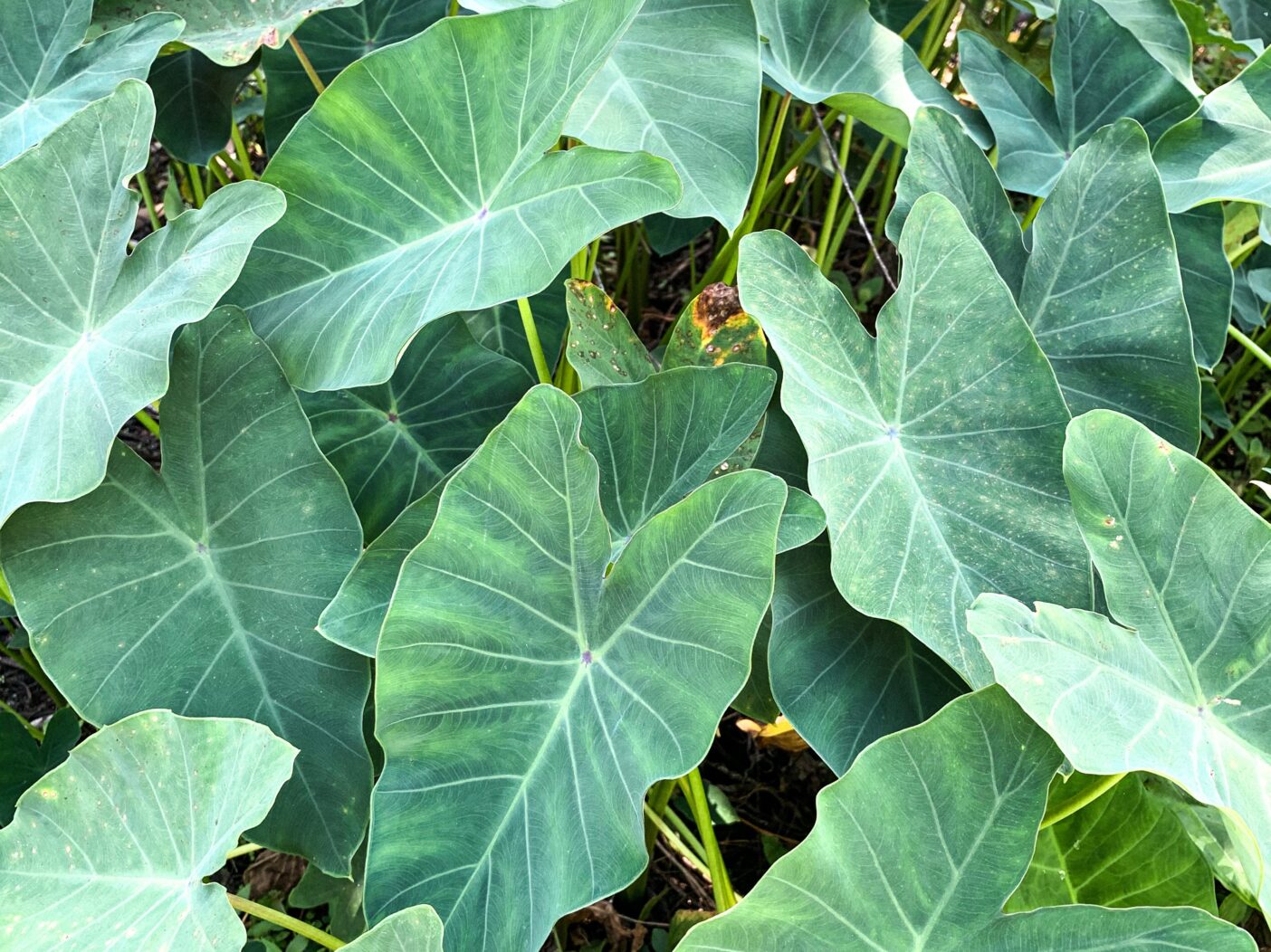
Hey everyone! I hope you’re enjoying your time at home and hopefully have some home gardening to keep you going while our garden is closed. We can all use a little humor these days, and I’ve got just the tale to distract you.
My name is Lauren, and I am a gardener at Naples Botanical Garden. I have been gardening since I was little and studied permaculture in college. Permaculture is all about food and edible growing. Needless to say, I am very interested in plants you can eat. My backyard includes mangos, lychees, avocado, peaches, citrus, bananas, miracle fruit, starfruit, loquats, sugar cane, and taro.
I happen to live next door to a fellow gardener, and while we were socializing one day, I apologized for one of my plants running into his yard. It was something I’d grown from a bulb I’d found floating near the banks of the Imperial River in Bonita when I was out tubing one day. I didn’t realize how much it would spread. He didn’t mind. He even identified it for me as taro, an edible plant. Our conversation shifted, and we moved on, but given my obsession with edibles, I couldn’t resist a Google search later on.
The next week, I decided to dig one up. I proudly showed my husband what I’d grown and what I’d learned about taro as a food source (it’s considered a staple crop in Southeast Asia; the Lea Asian Garden at work actually features a plot of it). We should make some tonight, I suggested. He was a bit skeptical and apprehensive, but I assured him I’d done my homework.
But what the internet didn’t tell me was that you have to prepare taro in a very specific way before you eat it.
With me leading the charge, we sliced up and pan-fried the tubers, the starchy, potato-like portion of the plant. If any of you eat veggie chips, like we do, you’ll know that taro is often included in the blends. My husband gave me the honor of the first bite and waited a moment before he, too, popped the chip into his mouth. My face quickly changed from YUM-O to OH-NO. Then he reacted, spitting the taro into the garbage — thankfully for him. But it was too late for me. I had swallowed. His face twisted up, and he said, “Is this happening to you, too?” I could barely respond. I felt like my mouth had been hit by a hammer and like I was swallowing fiberglass. It was like little teeny tiny razor blades were slicing up our mouths with a strange sensation of numbness.
Thankfully, we are both pretty calm under pressure, and he said, “Start Googling!” Within a few minutes we discovered we weren’t going to die. Phew! We found remedies in some medical-type journals on how to dissolve the raphides, needle-shaped crystals of calcium oxalate, that were pricking and injecting our throats and mouths. We laughed, drooled and sat over our kitchen sink sloshing and gargling with apple cider vinegar for relief.
I’ve since learned some tips. Wear gloves when handling the plant. The leaves and stems (which can be eaten like other leafy greens) need to be boiled — at least twice, though I recommend doing it three times. Dump the water between each boil. The tubers can be steeped in cold water overnight to help remove the toxins and can be prepared using a few different methods. Peel the tubers, rinse, and always use caution by overcooking rather than undercooking. You can bake, fry, roast or boil the tubers just like a potato depending on your intended dish.
If you do still manage to mess up the process, don’t panic. Vinegar or baking soda mixed with water will help to dissolve the crystals. Make sure you don’t swallow, and be ready for a week of severe discomfort followed by a few weeks of minor discomfort.
My husband and I can still feel the effects of it — like a rather extreme and constant heartburn — and it has been a couple of weeks since our “adventure.” So my advice to you: Please do your research before cooking and consuming anything you are unfamiliar with. Don’t be like me! I hope this brought a bit of a laugh at our expense along with some information on taro you will always remember. Garden on.
P.S. Yes, my husband will still try new edible plants with me … against his better judgement.
 About the Author
About the Author
Lauren Hardy is a gardener on the Horticulture Team at Naples Botanical Garden.

